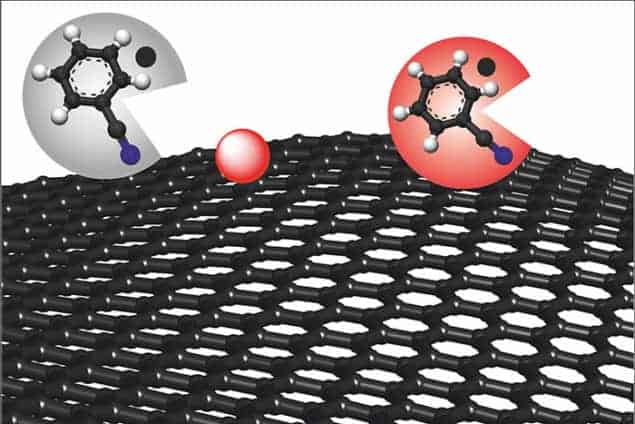Flash Physics is our daily pick of the latest need-to-know developments from the global physics community selected by Physics World‘s team of editors and reporters

Producing pristine graphene cheaply
The “wonder material” graphene has held much promise since it was first discovered in 2004. Indeed, the one-atom-thick honeycomb lattice of carbon atoms boasts a number of unique physical, electronic and optical properties – including its strength and electrical conductivity – that lends the material to a host of pioneering applications. But a persistent problem with truly rolling out devices using the 2D material is that of producing low-cost graphene that is, most importantly, defect free, on a large scale. Now, researchers at Friedrich-Alexander-Universiät Erlangen-Nürnberg in Germany say they have successfully synthesized defect-free graphene directly from graphite, for the first time . The graphene – which the team says is of a higher quality than has ever been achieved before – is produced directly from a solution, allowing it to be cut without causing defects. The new method, which is published in the journal Nature Communications, is also low cost and efficient.
SpaceX jumps ship to a new launch site
Following the explosion of a SpaceX rocket on 1 September, the firm says it will shift its flights to a nearly completed second site after damage to its Launch Complex 40 at Cape Canaveral Air Force Station. The private company SpaceX faced a major setback last week when its Falcon 9 rocket exploded ahead of a mission, during a pre-launch “static fire test”. SpaceX will now use launch pad “39A”, which is located a few miles north at NASA’s Kennedy Space Center. Meanwhile, the Federal Aviation Administration is investigating the disaster, which requires the suspension of SpaceX flights pending the results of the probe. Read more about SpaceX’s pioneering founder Elon Musk in our “Once a Physicist” column.
Mysterious microcrystals pave the way to cheaper lasers
Stacks of small, rod-shaped microcrystals, which are easy and cheap to grow, could be used in lasers, thanks to the latest work done by researchers at the National Institute of Standards and Technology in the US and Shandong University in China, which is published in the journal Science Advances. The researchers have discovered a potential way to sidestep longstanding difficulties with making such crystals, which are used to determine a laser’s colour as well as the light’s polarization. While the team says that its microcrystals outperform conventional crystals in some ways, they also challenge conventional scientific theory as to why they perform as they do. “We’ve spoken to a number of experts in different fields worldwide, and none of them can explain it,” says physicist Lu Deng. “Currently, no theory can explain the initial growth mechanism of this exotic crystal. It’s challenging our current understanding in fields from crystallography to condensed-matter physics.”
NASA to gain new InSight in Mars come 2018
NASA has announced that its Interior Exploration using Seismic Investigations, Geodesy and Heat Transport (InSight) mission to Mars will now launch in May 2018, following final approval by the agency’s science-mission directorate. InSight aims to study the deep interior of Mars and was originally scheduled to launch in March, but NASA suspended launch preparations in December 2015 due to a vacuum leak in its main science instrument – the Seismic Experiment for Interior Structure. If the craft successfully launches in May 2018, it is expected to land on Mars by the end of that year.
Dark-sky sites revealed across the UK
Today, the Science and Technologies Facilities Council (STFC) in the UK announced that a host of new stargazing sites perfect for astronomy and free from the dimming effects of urban light pollution have been identified across the country, bringing the total number of Dark Sky Discovery Sites to more than 150. “During the extra hours of darkness this autumn, thousands of people in the UK will be able to experience skies ideal for astronomy, thanks to 17 new Dark Sky Discovery sites” according to the STFC. The Dark Sky Discovery map highlights Dark Sky Discovery Sites and other venues that will be running events through the winter. These locations have been hand-picked to observe the sky on a clear night, offering good public access and great sightlines in all directions.
- You can find all our daily Flash Physics posts in the website’s news section, as well as on Twitter and Facebook using #FlashPhysics. Tune in to physicsworld.com later today to read today’s extensive news story on using large-scale metamaterials as seismic shields.


